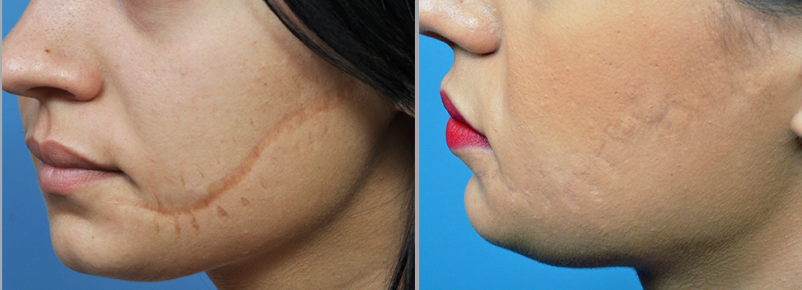What you need to know about a Scar Removal Procedure
Contents
Scars are the unavoidable results of injury or surgery. While some people do not have any problems with their scars and even consider them as marks of pride, others just want them to go away. Because they can affect a person’s appearance, they can make some people feel self-conscious.
Scar removal is a procedure to diminish a scar to make it appear less noticeable and to help it blend in with the surrounding skin texture and skin tone so that it looks “removed.” Since scars are one of the most difficult cosmetic skin issues to treat, they cannot be completely erased. Therefore, scar removal does not actually remove a scar. Instead, the procedure provides a more pleasing cosmetic result and will make the scar look significantly less visible.

What does the Procedure Involve?
There are several types of scar removal techniques available. These include:
-
Laser scar removal – this type of scar removal is noninvasive and is most effective for surgical scars. It involves the use of intense light to reduce the color, shape, and size of a scar. Different types of laser can be used to remove a scar. In general, the laser causes changes to the surface of your skin, allowing new and healthy skin to form at the site of the scar.
-
Dermabrasion – during dermabrasion, a machine that looks like a tiny sander is used to smooth away the top layer of the skin. It is a great way to smooth a raised scar.
-
Chemical peels – with this type of treatment, a chemical solution is placed over the site of the scar. When the chemical solution is removed, a layer of skin lifts away, revealing a smoother layer of skin.
-
Surgical scar removal – this is the most invasive type of scar removal. This type of scar removal is mostly done for deeper scars. During surgical scar removal, a surgeon may take skin from another part of your body (skin grafting) and place it over the scarred area. Skin grafting is usually used for people who have had burns. In some cases, the surgeon may also be able to reduce the size of a wide scar. Surgical scar removal usually involves general anesthesia.
Injections – steroid injections can shrink the size of a scar that rises above your skin, making it even with the surface of the skin. Dermal fillers or collagen can also be used. They work by filling the area around a deep scar.
How Long Should I Stay in the Area?
Your length of stay varies depending on the type of scar removal you underwent. For injections, you only have to stay for a few days, usually about 2 to 3 days. For dermabrasion and laser scar removal, it is recommended that you stay in the area for about 5 days. For surgical scar removal, plan to stay at least 7 to 10 days as you need to attend regular checkups. Chemical peels usually require multiple treatments, so your length of stay will be based on the number of treatments you need.
What’s the Recovery Time?
You generally have to wait for 1 to 2 weeks until you can resume your normal activities after most types of scar removal. If you choose to undergo injections, you should be able to get back to your normal activities in 24 hours. However, it is wise to avoid strenuous activities, such as intense exercise and heavy lifting.
What About Aftercare?
After all types of scar removal techniques, your doctor will give you detailed aftercare instructions. The instructions may include how to care for the affected area, medications to take, and restrictions.
You may be advised to avoid sunlight for a few weeks after scar removal. When you have to go outdoors during the day, make sure to cover your skin (such as wearing a wide-brimmed hat) and use a broad-spectrum sunscreen (at least SPF 30). You should also try to elevate the wound while sitting or resting to reduce swelling. It is important that you avoid bumping or hitting the area.
What’s the Success Rate?
Scar removal is a safe and effective treatment. However, it is important to have realistic expectations. Bear in mind that there is currently no procedure that can completely erase a scar, so scar removal can only fade the scar to some extent. As with any other procedure, scar removal also carries risks and side effects. These include bleeding, change in skin sensation, infection, skin sensitivity, and deep vein thrombosis.
Are there Alternatives to a Scar Removal Procedure?
You can try over-the-counter or prescription gels, ointments, or creams. These products can be used to make scars caused by cuts or other injuries appear less noticeable. Over-the-counter products are a great solution for minor scarring. If you have severe scarring, ask your dermatologist for advice.
For an in-depth analysis of a Scar Removal Procedure, watch this short video.
To check prices or to book a Scar Removal Procedure, in Thailand or anywhere else in the world, head on over to MyMediTravel now!

